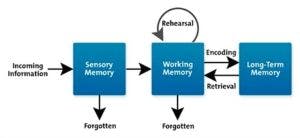How Microlearning is Transforming Corporate Training

If bountiful books and loose pieces of paper stacked up on your desk doesn’t strike you as ‘productive,’ look no further than microleaning. It does all the dirty work for you, cleaning up the mess you call traditional ‘corporate training.’ Microlearning effectively transforms corporate training through its ability to influence employee behaviour as learners become more intertwined with course material, fostering self-improvement.
Although microlearning’s basis is to deliver information in smaller, bite-sized chunks, we can guarantee that you will receive bigger returns. Microlearning is transforming corporate training by boosting employee engagement. Research has shown this leads to an increased participation rate, meaning greater knowledge of the company’s processes and products.
Learning and Development specialists have been looking far and wide for a workforce training solution, where employees can undertake training in the shortest time possible, whilst retaining the largest amount of knowledge. We understand how time-poor we can become, consolidating the need for a training program that fits into a busy schedule. To transform corporate training, microlearning’s delivery of short, but effective, content to support both short and long-term business objectives drives business success and employee progression. Course material can be accessed on demand, making it easy for employees to fill gaps in their learning, engraining a concise and whole picture into learners’ long-term memory.
Self-directed learning provides a plethora of learning benefits to employees, enabling them to learn at their own pace. This avoids potential cognitive overload, keeping in mind that the brain can only hold between three and five new pieces of information at any given time. Published by Atkinson and Shiffrin (1968), the Information Processing Model (fig. 1) is a theoretical representation of how we process different types of information we receive. The theory involves three major parts:
1. Sensory memory
2. Working memory, and
3. Long-term memory.

Fig. 1. Atkinson, R.C. and Shiffrin, R.M. (1968). ‘Human memory: A Proposed System and its Control Processes’. Sourced from Mind Tools.
Sensory memory only keeps an imprint of sensory information it considers important for storage in working memory. For instance, if you are playing water polo and the ball is being thrown toward you, your sensory memory releases other sensory information around you, such as background noise and then smell of chlorine, allowing you to only focus on the ball.
This is where Cognitive Load Theory comes in. Coined by John Sweller in 1988, the theory is based on how much new information the brain can absorb before releasing old information. As we touched on previously, this is approximately four pieces of new information, illustrating the importance of learning from digestible pieces of information to enable storage in long-term memory. These are just some of the reasons why microlearning is transforming corporate learning.
Want to learn more about the best way to implement microlearning?
If all of the above resonates and you’ve got to train a large, disparate group or workforce in the latest practices and policies of your organisation, get in touch at enquiries@edapp.com. You can also try EdApp’s Mobile LMS and authoring tool for free by signing up here.
Curated course examples
Author
Guest Author Daniel Brown
Daniel Brown is a senior technical editor and writer that has worked in the education and technology sectors for two decades. Their background experience includes curriculum development and course book creation.
